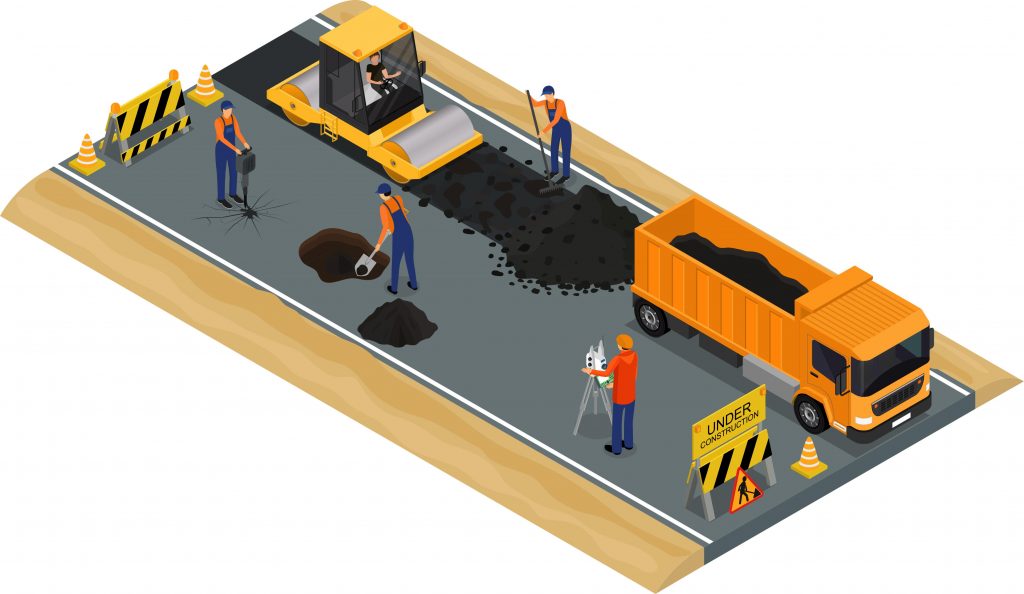Dig Once, The Most Important Policy You’ve Never Heard Of
Does your local public utility have a hard time keeping the lights on when it *checks script* rains? Are you sick of how often power outages are reminding you to throw out some of them nasty leftovers that your roommate forgot at the back of your fridge? SAIDI numbers got you down? Well, no worries. Let’s bury those wires! After all, if the primary problem for DTE is that the tree limbs keep falling on wires, well, trees can’t fall on underground wires, right? Utility companies say it’s too expensive. Meanwhile, multiple other agencies are telling us it’s too expensive to install buried fiber optic cable, upgrade sewer systems, replace lead water pipes, or, well, do anything else that involves improving our quality of life and our health, really! What if we could get all of them together in the same room and have an infrastructure party? There’s a name for this, and it’s called dig once! And it’s going to save America– by empowering us to do what we are best at: innovating new ways to consume!

Tell Me More! I, like some 99.9% of people, are unfamiliar!
*record scratch, freeze-frame*
You’re probably wondering how I ended up being such a nerd and die-hard advocate for such a generally esoteric cause.
That’s a valid question, I suppose.
“Dig once” is the name of a policy that, if enacted, would require specific levels of coordination between public utilities, telecom companies, and municipal or other public stakeholders. The policy would ensure that any time something is done underground, other things are also done– for example, any time gas mains are replaced, broadband fiber internet is also installed, or if electrical wires are undergrounded, water mains are replaced, etc. The idea is that this would save a huge amount of money, even if it would require money to spent now, rather than later. Most estimates suggest that doing everything at once would save as much as 80 or even 90% on costs because of how expensive excavation and repaving are.
Saving 80-90% of what, though?
Well, it’s hard to say precisely because of how bad coordination is. Municipalities spend somewhere in the low hundreds of billions of dollars per year on water, sewer, and stormwater infrastructure. Road costs are probably around a similar figure. Fiber internet spend per year is in the tens of billions, and there’s general consensus that it’s moving, but not fast enough. The Biden Administration announced $65 billion to accelerate the pace of broadband internet installation in 2021, while the FCC’s 2016 report on the subject cites a 25Mbps download speed as “broadband,” compared to, well, gigabit ethernet that is coming in many cities. (Biden had asked for $100 billion, and most of the geographies most desperately hurting for broadband access are notably rural areas).
According to the American Society of Civil Engineers’ (ASCE) 2021 Infrastructure Report Card, the estimated investment gap in infrastructure for the US is $2.6 trillion over the next 10 years. This report card includes several categories of infrastructure, including roads, bridges, airports, water systems, and more. And that’s a gap– it’s not what it’s already costing. Saving percentage points of either of those numbers would add up quickly.

A Caveat To Regulation
The people who write regulatory law are often faced with the reality that, while there are usually less responsible actors as well as more responsible actors in any given market, it’s often impossible to regulate in a way that only affects the irresponsible parties. Targeted regulation usually will do things like what we saw in the Dan Gilbert-authored bill that granted *checks notes* Dan Gilbert access to hundreds of millions of dollars of tax credits and other financing for new Detroit development projects. The state bill, whose language was unable to stipulate “Detroit,” referred to “cities with populations of over 600,000,” of which there is exactly one in the state of Michigan.
I introduce this idea because it’s worth mentioning that a policy that would only affect one company or stakeholder would not only be politically unpalatable, it’d also run the risk of being unconstitutional by interfering in the business of but one company. In other words, regulations can be prudently applied across the board. Dig-once policies must necessarily cover a complex range:
- Municipalities, which maintain sidewalks, roads, and many water systems, storm sewers, and sanitary sewer systems, as well as a very small handful of power distribution systems and internet infrastructure. State governments maintain some roads, too. Federal highways are to some degree the purview of the federal government, but there’s a complex mix of funding involving state user fees for roads. US highways and “business” interstates– uncontrolled access roads outside of cities and near “real” interstates, where you’re likely to find a Courtyard by Marriott next to a Chili’s- still usually remain under local or state control.
- Public utility companies, which maintain gas lines and power lines;
- Telecommunications companies, which install and maintain fiber internet.
Applying the policy across all of these entities will ensure that everyone is equally pissed off, which should be the goal of prudent regulation.
Policy Measures in Congress
Congress has at least made noises about pushing for Dig Once policy. Representatives Anna Eshoo (D, CA-16) and David McKinley (R, WV-1) introduced the measure to cover certain federal highway infrastructure projects. But this policy measure– which wouldn’t have covered local municipal-level infrastructure anyway- languished and never got off the ground. It’s something few Democrats and few Republicans are thinking about– with Republicans generally uninterested in the plight of municipalities that have to deal with costs pushed off onto them by infrastructure developers, and focusing more on deregulation (even when that, uh, well) and the alleged evil sins of woke ESG investing that allegedly brought down SVB (what?). In McKinley’s case, West Virginia is one of the poorest states in the union, with low rates of broadband access.
The rationale for improving the cost efficiency of infrastructure management while improving the quality of infrastructure should be a wholly bipartisan discussion– and should be palatable to the most vitriolic leftists as well as the most theocratic Fox News kool-aid guzzlers.
Why Not Dig Once?
Utilities are kind of like depository banks (as opposed to investment banks). They’re run by people who generally lack much in the way of imagination or color. They work on very long time horizons, and they enjoy quite arcane, bizarre tax treatment that allows them to make very predictable amounts of money in very predictable time frames. They’re thoroughly unsexy. And they know it.
A policy like “dig once” might throw into chaos their infrastructure upgrade plans, which are usually charted years out, and it might require them to spend more now. There are ways around this, of course, like the state agreeing to underwrite affordable sources of capital, or allowing them preferential treatment on cost recovery. But overall, if the savings were even ten percent, let alone the high figures of 80-90%, it seems like this might end up being unnecessary.
The last issue is that companies are often very cagey about what they’re spending and where. True, this may be a poorly kept secret, and something that’s easily deduced by looking at where companies are concentrating their efforts geographically. But companies like to hold their cards very close. Dig Once would necessitate (complex, frankly) coordination that might ruffle some feathers. I don’t know, I mean, I’ll do it! Sounds fun, honestly.

What would it take to advance such a measure in Michigan? I’m hoping to have some ideas in the coming weeks. I think there is a lot of opportunity between the state’s obsession with the automobile, the state’s portfolio of deteriorating roadways and bridges, and an increased focus on equity and the LMI space, that make it particularly significant. Michigan, like many states, has a large number of disinvested urban areas, but also a large number of disinvested rural areas. Returning again to the question of bipartisanship, this should be an easy sell.
The article is the complement of a previous article on why our power grid is falling apart in places like Michigan. Nothing I write, nor anything I have ever written, nor anything I will ever write, is reflective of anyone from whom I have ever collected, or will collect, a paycheck, and I’m not sure why anyone would assume otherwise.



